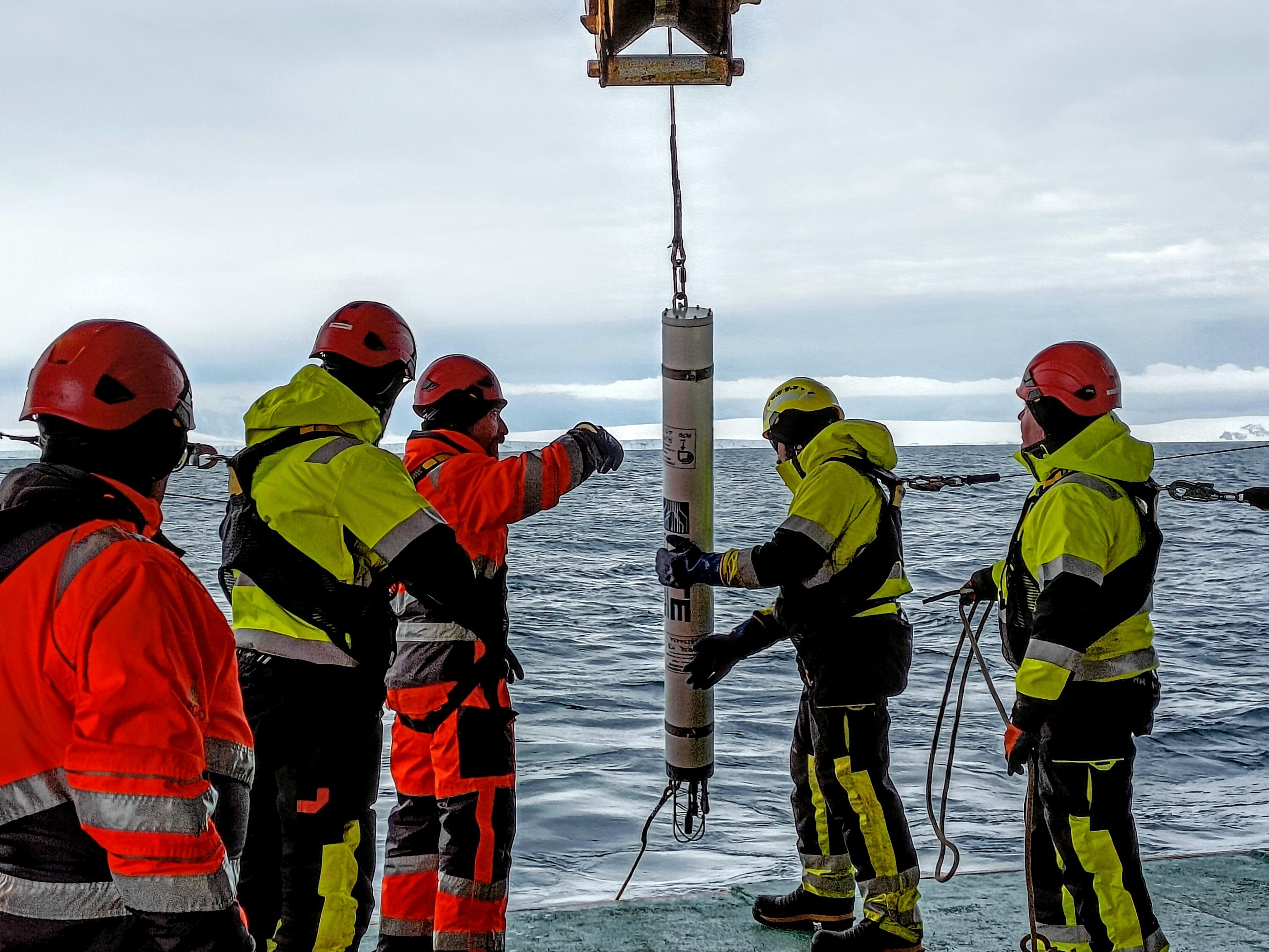- Acronimo
- AMORS
- Codice
- PNRA18_00154
- Anno
- 2018
- Area di ricerca
- Marine science
- Tematica specifica di ricerca
- Monitoraggio acustico a lungo termine del Mar di Ross
- Regione di interesse
- Area Protetta marina del Mar di Ross
- PI
- Andrea Trucco
- Istituzione PI
- Università degli Studi di Genova
- Sito web istituzionale
- http://www.diten.unige.it/index.php?lang=it
- Altre Istituzioni e soggetti coinvolti
- Consiglio Nazionale delle Ricerche-Istituto per lo studio degli impatti Antropici e Sostenibilità in ambiente marino
- Consistenza del team ricerca
- PI: Andrea Trucco, professore ordinario Università degli Studi di Genova. Membri del team: Gabriele Moser, professore ordinario Università degli Studi di Genova; Sara Pensieri, ricercatrice del Consiglio Nazionale delle Ricerche (CNR-IAS), Roberto Bozzano, ricercatore del Consiglio Nazionale delle Ricerche (CNR-IAS); Emanuele Fava contratto post dottorato presso Università degli Studi di Genova; David Solarna studente di dottorato presso Università degli Studi di Genova.
- Stato progetto
- In corso
- Stazioni principali usate
- Nave
- Il progetto
La recente istituzione dell'area marina protetta nel Mar di Ross rafforza la necessità di preservare la biodiversità e il grande ecosistema marino del bacino che rappresenta una delle aree più produttive dell'Oceano Meridionale, sebbene le sue caratteristiche acustiche non siano ancora state pienamente comprese.
Il progetto AMORS mira a combinare metodi di indagine acustici attivi e passivi per rispondere alla necessità di un monitoraggio a lungo termine del rumore ambientale in Antartide in tutte le sue componenti: fisiche (ghiaccio, vento), biologiche (vocalizzazioni di mammiferi ed uccelli marini, migrazione zooplanctonica) e antropogeniche.
- Immagini
-
- Motivazione, importanza della ricerca
The proposal is aimed at enhancing the observational capability of the mooring L part of the MORSea infrastructure in order to acquire over an extended period, including during the winter months, information on both the marine environment in an unperturbed ocean landscape and the migratory movements of zooplankton, creating a unique acoustic dataset for the study of the Ross Sea sound budget. The simultaneous use of passive and active acoustic systems will, in fact, provide data of underwater sounds and backscatter whose interactions could provide relevant elements for increasing knowledge of the Antarctic ecosystem of the marine protected area.
- Obiettivi della proposta
Assessment of Antarctic environmental variability can only be based on the availability of reliable long-term geophysical and biological observations. Such measurements play an important role in determining the point at which the cumulative effects of the environment and human activities affect animal populations. Often in biological studies, surveys of the physical environment are considered merely incidental, whereas they are complementary and an important component in understanding the behavior and processes of marine life.
In this context, AMORS aims to fill the gap by (a) exploiting a combined acoustic system (active and passive) that can overcome the difficulties of studying biological/geophysical changes on different time scales (day, month, year) even in winter months where visual/direct surveys are not possible and (b) providing the scientific community with services and indicators for environmental and ecosystem monitoring of Antarctica.
- Attività svolta e risultati raggiunti
Activities performed:
1) at-sea activities preparatory to the Antarctic campaign including in situ testing to define the optimal sampling strategy to be adopted for the acoustic profiler and passive acoustic sensor.
2) development of innovative algorithms based on discrimination between relatively stationary and transient sound sources and classification algorithms based on analysis of acoustic signatures of acquired measurements using supervised nonparametric classifiers and pattern recognition techniques (e.g., k-nearest neighbor, support vector machine, random forests).
3) passive acoustic data acquisition on the pack in December 2021.
3) installation of acoustic sensor on MORSEA observatory mooring L on January 23, 2022.
Results obtained:
Acoustic data set on pack and publication of results about the development of innovative algorithms to discriminate geo-physical noise sources.
- Prodotti
Paper: A. Trucco, R. Bozzano, E. Fava, S. Pensieri, A. Verri and A. Barla, "A Supervised Learning Approach for Rainfall Detection From Underwater Noise Analysis," in IEEE Journal of Oceanic Engineering, 2022, vol. 47, number 1, doi: 10.1109/JOE.2021.3091769.
